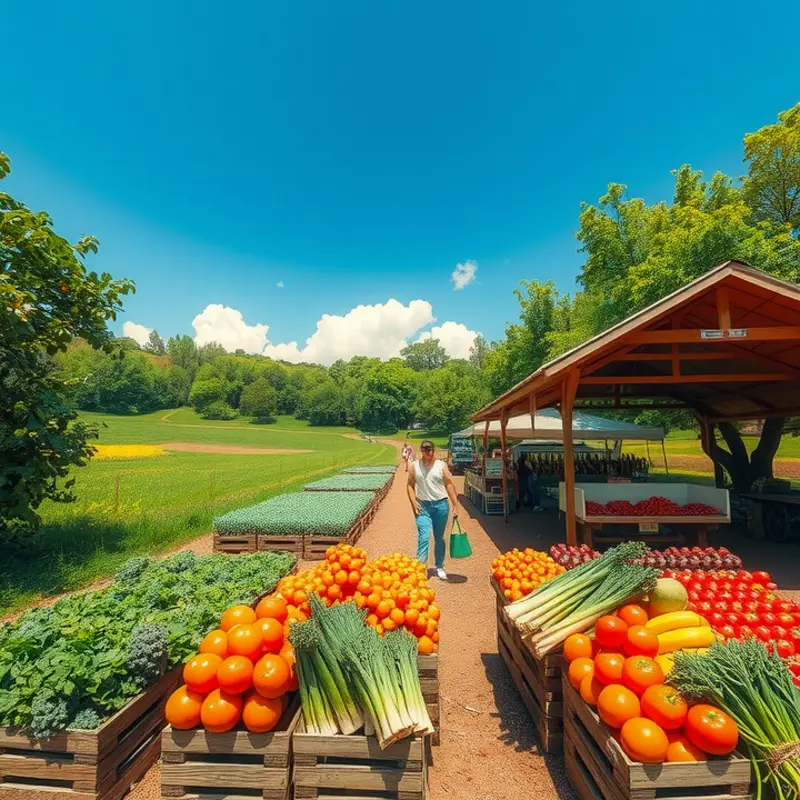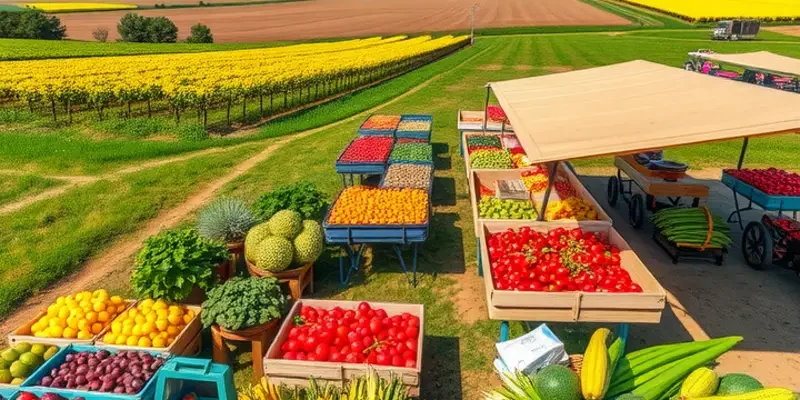Sustainable eating is more than just a trend; it’s a pathway to a healthier planet and a brighter future for our families. As more individuals wake up to the environmental impact of food choices, families can lead the charge by adopting practices that reflect care for the earth. Whether it’s buying local, reducing waste, or embracing plant-based diets, every choice counts. This guide aims to support families in making eco-friendly food choices, creating a positive ripple effect on the environment.
Harnessing Local Bounty: Benefits of Eating Seasonal and Local Foods

Eating local and seasonal foods offers numerous environmental benefits. Sourcing food from local farms significantly reduces food miles, the distance food travels from production to consumer, thus cutting down on greenhouse gases produced during transportation. By aligning our diets with nature’s rhythm, we can minimize reliance on out-of-season imports that require energy-intensive storage and transit.
The benefits of seasonal eating extend beyond eco-friendliness. Seasonal produce tends to be fresher and more nutrient-dense, having ripened naturally without the need for over-preservation. Tomatoes picked at their peak in summer taste noticeably more vibrant than those available in the heart of winter. Not only does this often translate into better flavor and nutritional value, but it supports a varied diet, closely aligned with nature’s cycles, promoting holistic health.
Promoting biodiversity is another major bonus. When you support local farmers, you’re encouraging the growth of a variety of crops, which can naturally deter pests and diseases, contributing to agricultural sustainability. This diversity ensures ecosystems remain robust, supporting countless species, including beneficial insects and soil organisms.
Finding local food sources can greatly enhance your commitment to sustainable eating. Farmers markets are fantastic for building a connection between consumers and producers, establishing a direct link to fresh, handmade produce. Along with fresh vegetables and fruits, you may stumble upon locally produced honey, artisanal cheese, or handmade bread, reducing both packaging waste and the carbon footprint.
Community-Supported Agriculture (CSA) programs provide another avenue. By subscribing to a CSA, consumers financially support farms at the start of the season and receive a regular share of the harvest. This model fosters a sense of shared risk and reward between farmer and consumer, encouraging locals to retrain their eating habits to match the seasons.
Those with a green thumb might consider starting their own garden. Even a modest space, like a balcony or small yard, can become a flourishing source of fresh produce. Growing your own vegetables reduces the need for packaging and transportation, offering complete control over the use of pesticides and fertilizers. It’s an excellent way to engage children with the source of their food, enhancing their appreciation of natural cycles.
To further support your sustainable journey, explore tips on reducing food waste and enhancing storage practices, which can be seamlessly integrated with eating locally and seasonally. You can find practical advice on eco-smart storage by visiting this resource.
Incorporating local and seasonal eating practices can transform your relationship with food, fostering environmental stewardship and a deeper connection to the source of our sustenance. As each season introduces new delights, embrace the challenge to discover and enjoy nature’s offerings while contributing to a healthier planet.
Waste Not, Want Not: Strategies for Reducing Food Waste

Food waste presents a unique challenge and opportunity in the quest for sustainable change. Families can take practical steps to minimize their waste footprint and contribute positively to the environment.
The first step is meal planning. It grounds our approach in efficiency and clear intent, helping prevent excess by ensuring each purchase is necessary. By mapping out weekly meals, families avoid buying foods they won’t use. Visit Minimal Prep Dinner Ideas for inspiration. This can reduce impulse buys that often culminate in waste.
Creative utilization of leftovers extends the life of meals. Transforming yesterday’s dishes into new meals is both a practice in preservation and culinary exploration. For instance, leftover rice can morph into a stir-fry or soup, and vegetables can be repurposed into hearty stews or salads. This habit underscores the philosophy that nothing edible is truly leftover but merely the beginning of something fresh.
Composting is another pivotal strategy for waste reduction. It transforms food scraps into nutrient-rich soil, fostering a cycle of rebirth for the earth’s resources. Families can start small with a simple backyard bin or an indoor composting system suited for apartments. Over time, composting not only reduces landfill waste but also nurtures home gardens in an eco-friendly cycle.
Understanding expiration dates can reduce unnecessary discards. Many households mistakenly equate “best by” labels with spoilage. These dates often indicate peak quality rather than safety. By learning to decipher these labels, families can confidently consume foods that are still safe, opposed to perfect.
Proper storage techniques extend the life of perishable goods. For a guide on efficiently storing sauces to prevent waste, refer to Eco-Smart Kitchen Storage. Keep herbs fresh in a cup of water, store potatoes in a cool, dark place, and wrap cheeses correctly to slow spoilage. Optimizing the fridge’s capacities by categorizing and cyclating foods ensures nothing is forgotten.
These strategies offer sustainable paths toward reducing food waste. By emphasizing planning, creative use, and proper storage, families can significantly shrink their waste footprint, savor every bite, and contribute meaningfully to a healthier planet.
Final words
By embracing sustainable eating practices, families can lead a lifestyle that is healthier for both their members and the planet. Making small but impactful changes, such as eating locally, reducing food waste, and being mindful of ingredients, can create a significant positive impact. This way, not only do we ensure that our families enjoy nutritious meals, but we also contribute to preserving the environment for future generations. Empower your family to make eco-friendly choices that resonate through your meals and your actions, creating a culture of sustainability that lasts.








